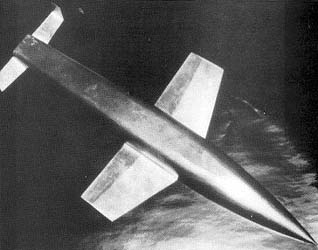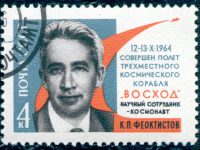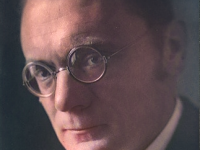
Eugen Sänger (1905 – 1964)
On September 22, 1905, Austrian rocket propulsion engineer Eugen Sänger was born. Sänger is best known for his contributions to lifting body and ramjet technology. Sänger also perfected a “regeneratively cooled” liquid-fueled rocket engine that used its own fuel, circulating around the combustion chamber, to control engine temperatures.
By Rocket into Planetary Space
After the early loss of his father, Eugen Sänger attended elementary schools in Budapest and Kelenföld. As early as 1918, Sänger was inspired by Kurd Laßwitz‘s novel On Two Planets for the then still utopian space travel. In the 1920s he studied civil engineering at the Technical Universities in Graz and Vienna.During his years of study, Sänger was inspired by Hermann Oberth’s book Die Rakete zu den Planetenräumen (By Rocket into Planetary Space) to study civil engineering to aeronautics. Eugen Sänger further joined Germany’s amateur rocket movement, the Verein für Raumschiffahrt (VfR – “Society for Space Travel”) and in 1932, Sänger became a member of the SS and the NSDAP. From 1926 to 1942 he designed the hypersonic space plane in 1929 he secretly launched a rocket model, His first dissertation draft with the concept title Rocket Flight Technology was rejected at the Vienna University of Technology. He published a revised part as a book in 1933.
A Bomber Project
Sänger was later allowed to graduate, after submitting a more mundane work concerning statics of wing trusses. In the mid 1930s, Sänger published articles on rocket-powered flight for the Austrian journal Flug (Flight), which also attracted attention to the Reichsluftfahrtministerium (Reich Aviation Ministry). They got the idea to build a bomber that could strike the United States from Germany. The Ministry gave Sänger a position in a research institute near Braunschweig and also built a liquid oxygen plant and a test stand for a 100 tonne thrust engine. According to his own statements, he was arrested in 1933 as an SS man in the Austrofascist corporative state during illegal exercises and subsequently feared losing his position at the Technical University because of his political views. This may have been the reason why Sänger hardly ever made an appearance as an “illegal” after that. This inactivity was later blamed on him by the Nazi regime, and applications for new admission to the NSDAP from 1939 onward were rejected.
Silbervogel
In 1936, Sänger started leading a rocket development team at Lüneburger Heide and gradually, he conceived a rocket-powered sled that would launch a bomber with its own rocket engines that would climb to the fringe of space and then skip along the upper atmosphere. The so-called Silbervogel covered the large distances in a series of suborbital hops. When Eugen Sänger designed rocket motors which the space-plane would use, it had to generate about 1 meganewton of thrust. Back then, Sänger was one of the first to suggest using the rocket’s fuel as a way of cooling the engine, by circulating it around the rocket nozzle before burning it in the engine. After the defeat in Stalingrad in 1943, the project was abandoned due to lack of resources and the company concentrated on projects that could be realized quickly. In the long term he worked on the development of a space shuttle, which he called a space boat and which was to be used to transport people and freight between the ground and orbit or space stations.
Ramjet Technology
1939-1945 first flight towing tests with high-temperature ramjet engines. In 1942 he was dismissed in Trauen for lack of cooperation. He was later reinstated as head of department at the German Experimental Institute for Gliding in Ainring, where he also further developed the ramjet developed by René Lorin (Ramjet, i.e. ramjet engine), which made it possible to achieve a multiple speed of sound. Sänger tested it on various bombers of the German Luftwaffe.

Model of the Singer II in the Technik Museum Speyer
Postwar Career and Space Research
In 1946, Sänger went to France, where he worked on various developments for the aircraft manufacturers there, including the experimental aircraft Nord 1500, and finally co-founded the International Astronautical Federation. From his election at the International Astronautical Congress in London in 1951, he headed the Federation for two years. In 1949, in his treatise Die Bewegungsgesetze der Raumfahrt (The laws of motion in space travel), Sänger dealt with the questions of how to put something into orbit around the earth, how long the life span of artificial satellites is and how to connect them to ground stations. In 1953 he made his first appearance at the Swiss Federal Institute of Technology in Zurich with a lecture on the theory of the photon rocket with a systematics of hypothetical corresponding engines and their possible technical significance. In the same year, he carried out his first work on molecularly reflecting surfaces for hypersonic aircraft, and from 1954 to 1961 he carried out the first extensive test stand work on large hot water rockets as launch engines for space planes. His most ambitious project, however, was the conception of photon propulsion for interplanetary and interstellar spacecraft (1953-1959).
Interstellar Travel
Sänger emphasizes that stars can be reached even at a distance of many thousands, even millions and billions of light years within the lifetime of a human being, because time passes more slowly on board fast spaceships due to time dilation. At the 1955 conference of the Institute for the Physics of Jet Propulsion in Freudenstadt, he gave as the duration of journeys to the center of the Milky Way about 18 years, to the Andromeda Nebula about 26 years, and around the world 41.9 years, if you accelerate or brake halfway at 1 g and approach the speed of light very close to the speed of light by converting all the fuel into photons. Meanwhile, for those remaining on earth, periods of many billions of years pass by.
Later Years
Eugen Sänger returned to Germany in 1954 to research on jet propulsion in Stuttgart. In the 1960s, Sänger acted as a consultant for Junkers in designing a ramjet-powered space-plane that never left the drawing board. Further innovations that Eugen Sänger was involved in included the use of photons for interplanetary and interstellar spacecraft propulsion prefiguring the concept of laser propulsion and the solar sail.
Eugen Sänger died on 10 February 1964 in Berlin at age 58.
The Antipodal Bomber in Trauen – Der Antipodengleiter von Trauen, [9]
References and Further Reading:
- [1] Eugen Sänger at Britannica
- [2] Sänger’s Silbervogel Orbital Bomber
- [3] Wade, Mark. “Eugen Albert Saenger”. Astronautix.com die Raumfahrt. Stedinger-Verlag, Lemwerder 2005
- [5] Eugen Sänger at German National Library
- [6] Duffy, James P. (2004). TARGET: AMERICA : Hitler’s Plan to Attack the United States. Praeger.
- [7] Westman, Juhani (2006). “Global Bounce”
- [8] Eugen Sänger at Wikidata
- [9] The Antipodal Bomber in Trauen – Der Antipodengleiter von Trauen, German Aerospace Center, DLR @ youtube
- [10] Sänger, Eugen; Irene Sänger-Bredt (August 1944). “A Rocket Drive For Long Range Bombers”. Astronautix.com.
- [11] Timeline of Rocket Scientists, via Wikidata and DBpedia






